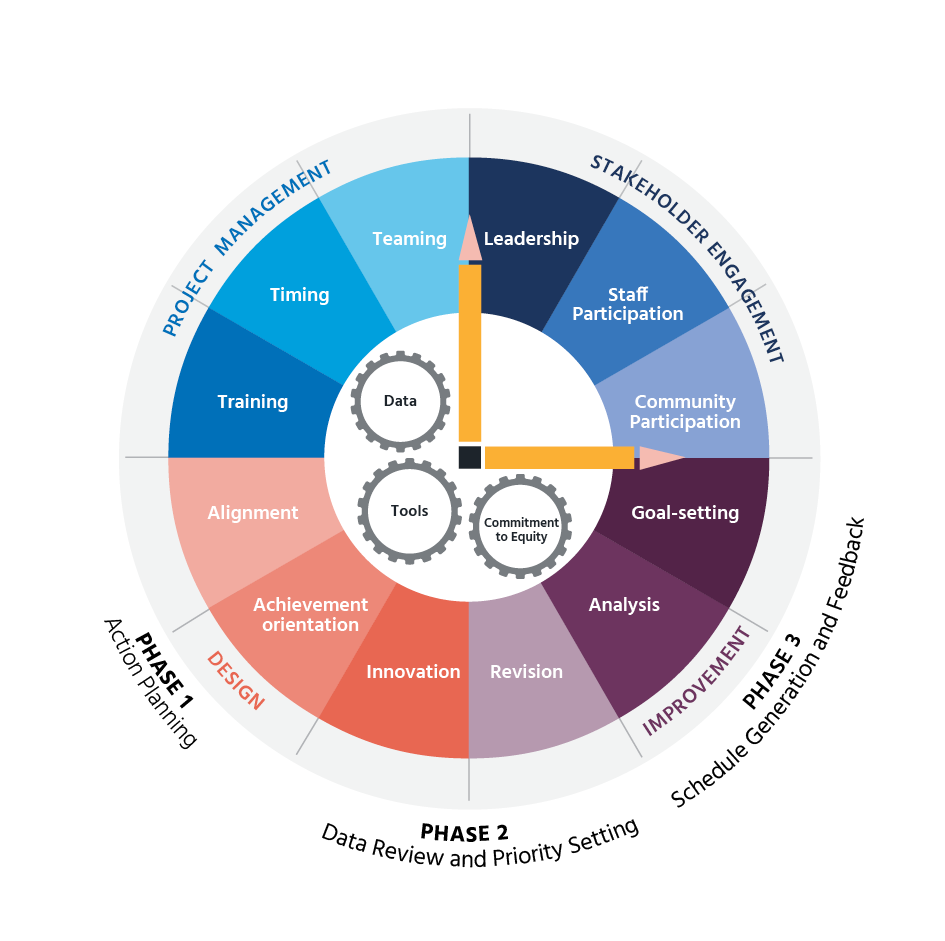When district leaders strategize to build equity in their schools, they may well overlook the master schedule’s potential to transform education.
The traditional method of assigning students and teachers to classes “can perpetuate disparities in access to rigorous and rich coursework and experienced educators,” according to “About Time: Master Scheduling and Equity,” a new report from Columbia University’s Center for Public Research and Leadership.
This entrenched process often results in fewer Black and Latino students taking Advanced Placement and International Baccalaureate classes. These students are also more likely to be placed with less experienced teachers, the report says.
Equity-minded districts are encouraged to shift from technical to more strategic scheduling methods designed to mitigate inequities.
More from DA: Teachers unions target systemic racism in wake of Chauvin verdict
“Strategic scheduling means taking a second look and asking is this the best fit of students to teachers and the most equitable fit of students to teachers,” says Andrea Clay, an author of the report and the Center’s director of legal strategy and policy.
“It’s thinking about what works best and making a difference by pairing the best teacher with the students with the most needs,” Clay says.
Strategic scheduling, according to the report, allows schools and districts to:
- Arrange time, resources, and people to maximize student learning and experience
- Provide teachers adequate time to collaborate and refine their practice
- Provide more equitable access to rigorous and rich coursework
- Pair students with the best-fit educator
- Improve attendance, learning, and graduation rates
Intervention and enrichment time
The first step is making scheduling a collaborative process between district leaders rather than the task of a single building administrator working alone, Clay says.
Strategic scheduling can then guide administrators in ensuring the demographic makeup of advanced courses matches the demographic makeup of the school.
This also helps to guarantee that underrepresented students are placed in classes with the school’s best and most experienced teachers, Clay says.

One large district that embarked on strategic scheduling realized that teachers were using their time differently across its elementary schools. The result was that some students were not receiving sufficient English or math instruction.
Administrators responded by creating scheduling guidelines that provided more consistent instruction time across the district, Clay says.
They also carved out specific intervention and enrichment blocks so students would not be pulled out of classes or have to stay after school, she says.
Framework for strategic scheduling
The Center for Public Research and Leadership’s report lays out a framework for districts looking to overhaul the scheduling process. It focuses on four key “domains”:
-
- Project management: The right people working together on the right timeline with the right resources and support can manage the scheduling process toward equity-oriented goals.
- Stakeholder engagement: Broad stakeholder participation is driven by transparent and open communication that increases understanding about the importance of scheduling, and generates feedback to improve the schedule.
- Design: The schedule design is a responsive and student-centered approach to structuring time, student and educator placement, and the overall learning environment.
- Improvement: This requires the regular review of key measures of the schedule’s effectiveness and continual problem-solving to improve the schedule’s impact on students’ access and outcomes.
The adjustments many districts have made during COVID—and the feedback received from students and parents—have given some administrators a jumpstart on rethinking their schedules to provide more flexible instruction, Clay says.
“Districts are looking at schedules in a new light,” Clay says. “Some districts have already scheduled multiple times within this single school year, and they’re using the schedule to respond to feedback and match state needs of students.”









